

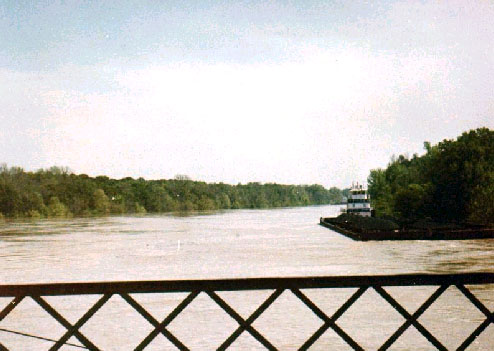
The towboat
is approaching the bridge with barges loaded with coal.
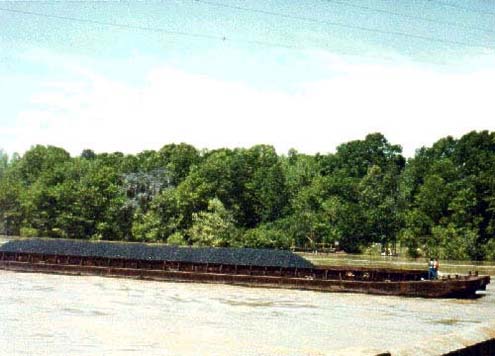
This frame
gives you an idea of how fast the river is running. Obviously at or near
flood stage
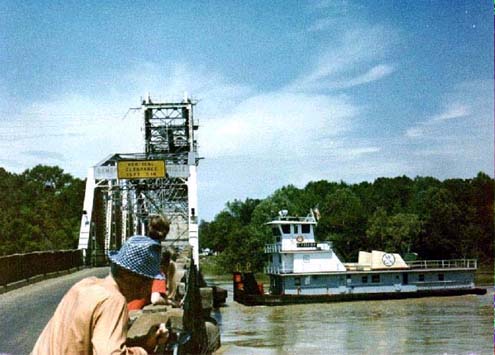
Oh
CRAP!!! The bridge didn't open and the boat can't stop. Notice that
the tug has released the barges. He is backing as hard as possible to try
and avoid a collision with the bridge.
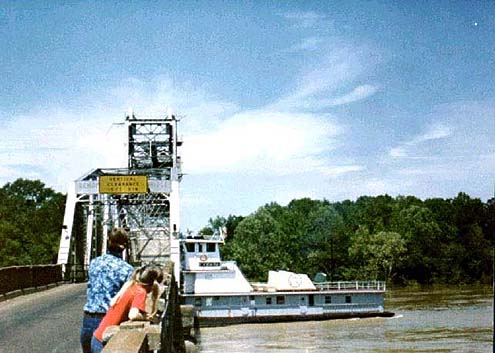
Can't back
down enough against the current.
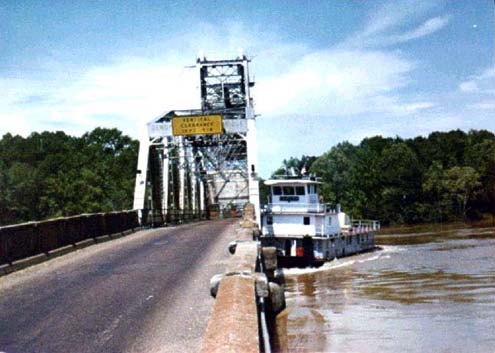
Uh Oh!
The current has swung the boat around sideways.
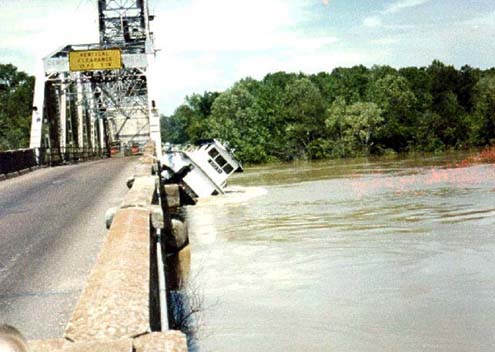
The cook
thinks maybe something isn't quite right.
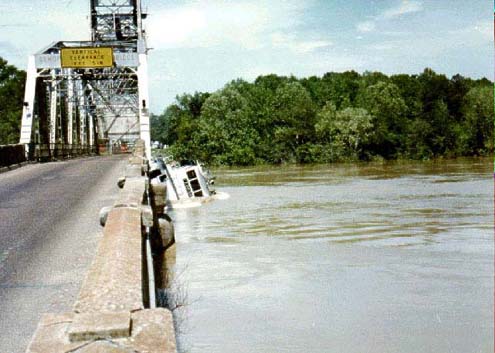
The boss is
going to be REAL mad!
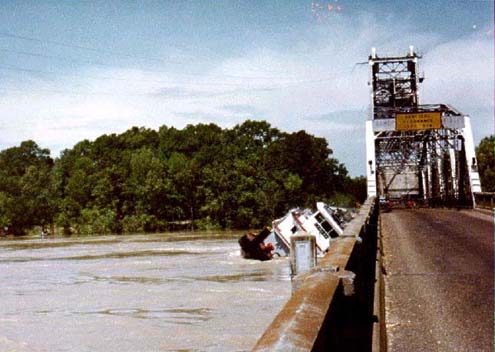
Uh....
Boss? You ain't gonna believe what we just did!
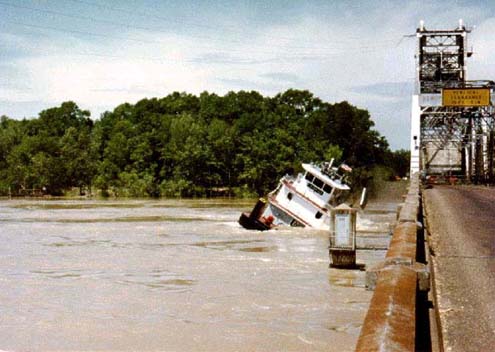
She's low,
but the flag is still flying.
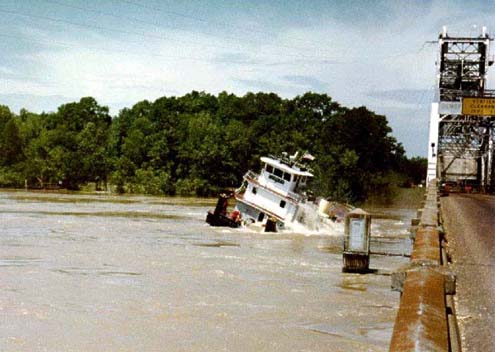
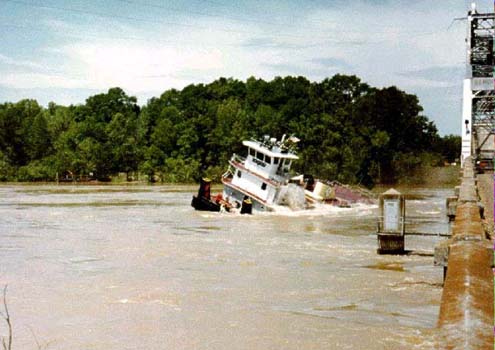
The
wheelhouse door and the door in the second deck are now open.
Look closely at
the bottom righthand side of the picture
and you will see that the bridge
guardrail is underwater.
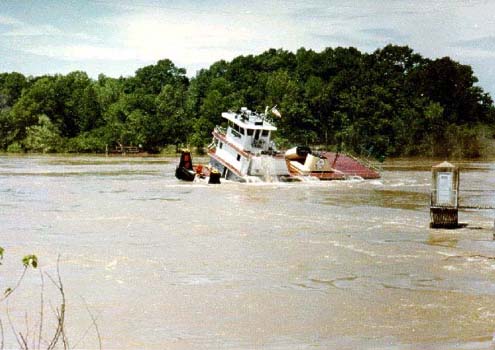
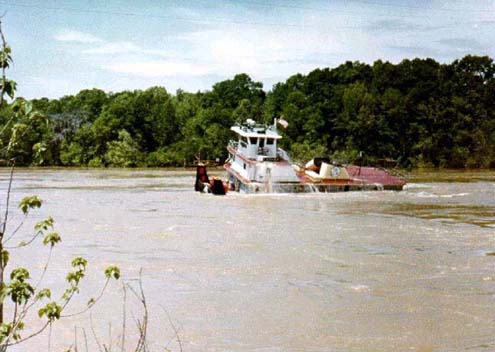
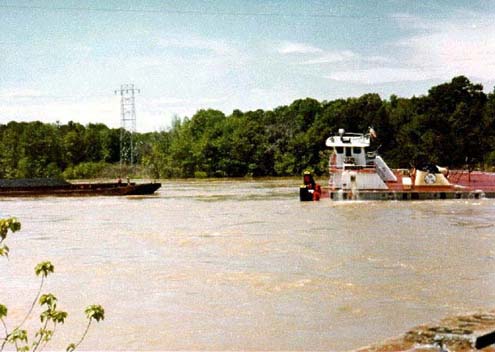
Look at the
water pouring out of the second deck doorway.
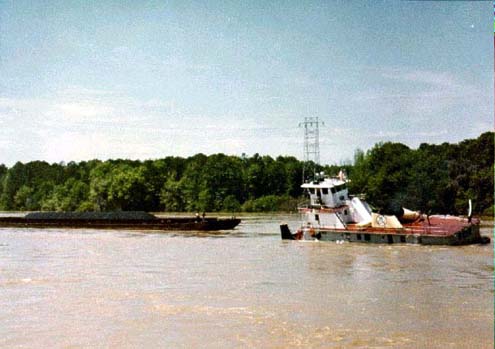
The working
deck is still underwater, but rising.
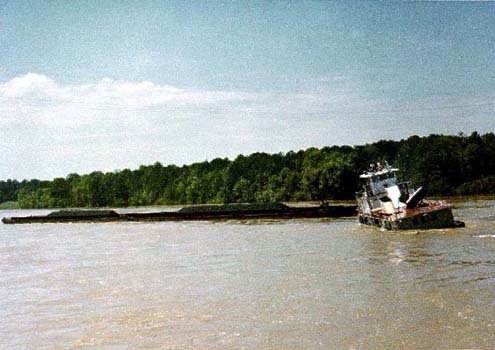
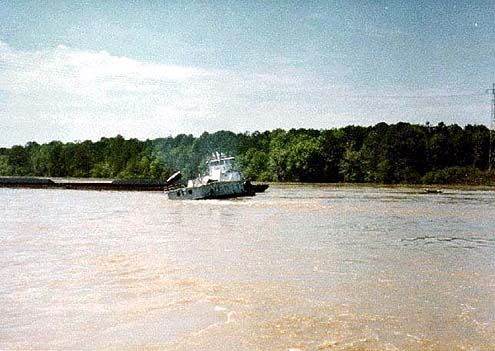
Notice
anything unusual?
Look at the smoke coming from the exhausts. This
thing is running!!!
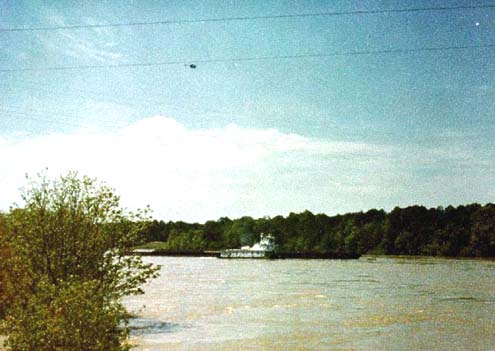
Notice the
propwash at the rear of the tug. The boat is upright and back under power.
Ho Hum. Just another day on the river.
Originally from: http://personal.atl.bellsouth.net/lig/r/a/rayf/Towboat/towboat.html
| There are some things about me that you are just unaware of, and this
instance is a fitting example. Please send this to all, my explanation.
And as Paul Harvey used to say..." that's the rest of the story..."
It was either late 1978 or early 1979, I have forgotten exactly, but anyway, I am close on either... The river is the Tombigbee River and this happened to be the record high water ever for that area. The towboat you see coming down on the bridge is the Motor Vessel Cahaba owned by Warrior Gulf Navigation out of Mobile, Alabama. Warrior Gulf is a subsidiary of Pittsburg Steel. I know you are familiar with Birmingham's coal mines and steel mills, and this company would haul iron pellets up to Birmingport and off-load to make steel plate. On the return the barges were filled with coal for export at the McDuffie Coal Terminal at the mouth of the Mobile River and at the head of Mobile Bay. The Bridge was the Old Rooster Bridge (since demolished and removed - I saw the explosion to tear it down also) located below Demopolis, Alabama. The land-side highway dead ends at the bluff, and you can still drive to this site and imagine how high the river had to be to get to the bottom of the bridge... The pass or Channel Span of the bridge was located on the far West side of the river, or on the opposite bank from the photographer's standpoint. In normal river flow, we would drop down near the rock bluff and steer through the opening to pass southward with our tows of coal barges. Normal loads were six barges, each measuring 195' X 35' and loaded to a 10' draft. This allowed each barge to carry approximately 2,000 tons of coal (times six = 12,000 tons X 2000 pounds = 24 Million pounds of cargo.) The boat is 1800 Horsepower twin engine diesel built in Pine Bluff, Arkansas. It is named after one of the eight "friendly" Indian tribes. It is the Motor Vessel Cahaba. At the "sticks" or helm is Captain Jimmie Wilkerson, a long time river pilot and was my personal friend - since deceased. The river current was so very treacherous that we were forced to drop down to the bridge in the slack(er) water on the left descending bank and when we got down to the bridge, we uncoupled the boat from the barges and let the barges drift down under the bridge. The bottom of the bridge would "shave" the coal stacked in the barges off to a level surface. The next step was to back the vessel upriver and then go over to the far West side and traverse the bridge's channel span with the boat, and run down and catch the barges. It was just too dangerous to try to bring the barges through the bridge span in the current. Anyway, Jimmie dropped down properly and with the entire rest of the crew standing on the barges for safety, he began to reverse his engines to back away. His stern would have to be kept directly pointed into the current or the boat would travel sideways like a kite without it's tail. Captain Jim was a fine pilot, but he made a small mistake and his stern was caught in the current, twisted sideways and the river smashed him into the bridge sideways. Notice that the boat re-surfaced right side up on the down stream side. What luck you say? Nope, WGN ballasted all their vessels with three to four feet of cement in the bottom. The boat was like a little yellow rubber duckie, and came back up like a duckie oughta do. The boat suffered major cosmetic damages, but little flooding because of water tight doors, except in the pilothouse. Notice the picture where the boat is not quite righted and you can see water pouring out of the wheelhouse door. The chair washes out, and Jimmie told me he was holding on to the controls with all his might to keep from going out the drain and into the river. He was very shook up and you can see him approach the tow of barges downriver. Well he didn't get it together quite soon enough and he smashed into the barges, causing further damage. I next saw Jimmie about a month after this and we had a cup of coffee together and talked about the incident. He was smoking a Camel Non-filter but didn't even need an ashtray beacuse his hands were still shaking too much for the ash to build up to any degree. How do I know all this? I was on the boat that went through the bridge immediately before the Cahaba. The Motor Vessel James E. Philpott made the bridge and was headed south at close to 15 MPH. For all you who don't understand, that is very fast on a commercial towboat with that much tonnage. Glad to pass this on to everybody... Captain Michael L. Smith |